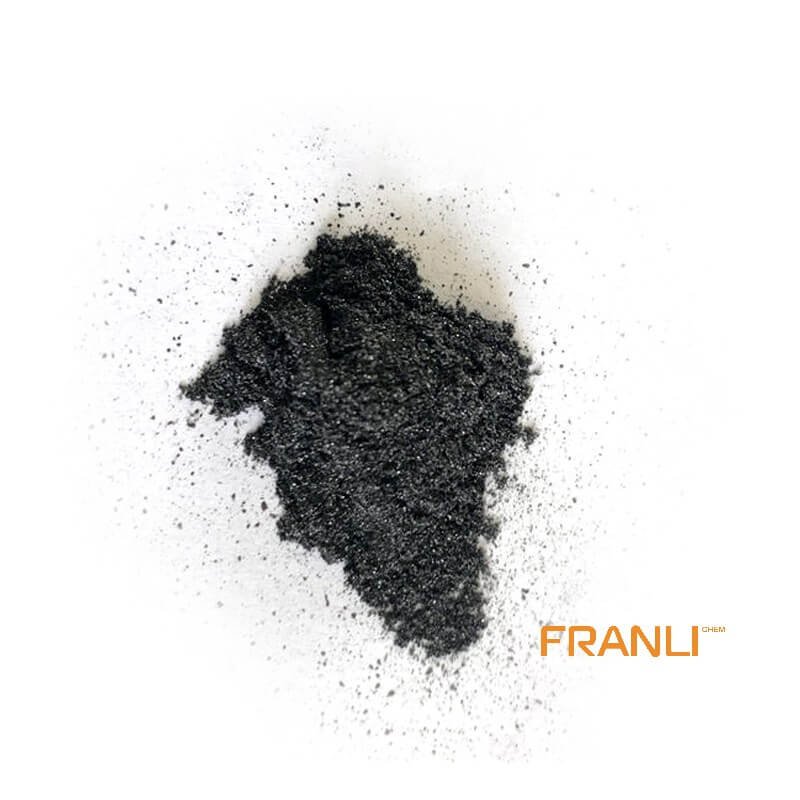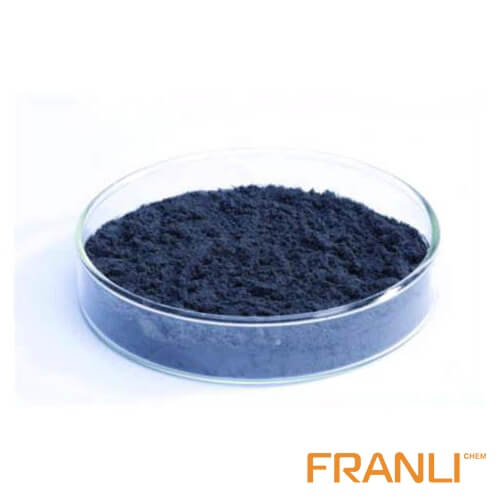


Expandable Graphite
Size
0.50mm or 0.106mm, etc
Package
25 kg small bags into ton bags
Origin
China
Features
Preservative/Electrical and thermal conductivity, etc.
Application
Fireproof sealing element, flame retardant, refractory brick, etc.
Expandable graphite crystal is a typical layered carbon material. Other heterogeneous particles such as atoms, molecules, ions, and even atomic clusters are inserted into the interlayer of crystalline graphite by physical or chemical methods to form a new layered compound, which is called graphite interlayer compound, namely expandable graphite.
Request a quote
Expandable graphite is an interlayer compound in which foreign substances with properties different from graphite are inserted into the graphite sheet by physical or chemical methods. It can expand rapidly under high temperatures. As a new type of carbon functional material, it has many special properties. It can be widely used in electrode materials, petrochemical industry, fire and flame retardant, oil-absorbing materials, environmental protection, medical dressings, military smoke agents, and anti-static coatings. Therefore, the research on its preparation is particularly important.

Chemical oxidation
Chemical oxidation is a traditional method for preparing expandable graphite. In this method, natural flake graphite is evenly mixed with an appropriate amount of oxidant and intercalation agent, controlled at a certain temperature, continuously stirred, washed, filtered, and dried to obtain expandable graphite. The chemical oxidation method has become a relatively more widely used and mature method in the industry with the advantages of simple equipment, convenient operation, and low cost.
The process steps of chemical oxidation include oxidation and intercalation. The oxidation of graphite is the basic condition for the formation of expandable graphite because whether the intercalation reaction can proceed smoothly depends on the opening degree of graphite layers. Natural graphite has excellent stability and acid and alkali resistance at room temperature, so it does not react with acid and alkali. Therefore, the addition of an oxidant has become an indispensable key component in the chemical oxidation method.
There are many kinds of oxidants. Generally, the oxidants used are solid oxidants (such as potassium permanganate, potassium dichromate, chromium trioxide, potassium chlorate, etc.) or some oxidizing liquid oxidants (such as hydrogen peroxide, nitric acid, etc.). In recent years, it is found that potassium permanganate is the main oxidant commonly used in the preparation of expandable graphite.
Under the action of an oxidant, graphite is oxidized to turn the neutral network macromolecules of the graphite layer into plane macromolecules with a positive charge. Due to the repulsion of same-sex positive charges, the distance between graphite layers increases, which provides a channel and space for the intercalation agent to enter the graphite layers smoothly. In the preparation process of expandable graphite, most intercalators are acid. In recent years, researchers have mainly focused on sulfuric acid, nitric acid, phosphoric acid, perchloric acid, mixed acid, and glacial acetic acid.
Electrochemical method
The electrochemical method is to form a composite anode with graphite and metal materials (stainless steel, platinum plate, lead plate, titanium plate, etc.) under constant current and taking the aqueous solution of the insert as the electrolyte, and inserting metal materials into the electrolyte as the cathode to form a closed circuit; Or suspend graphite in the electrolyte, insert cathode and anode plates into the electrolyte at the same time, and conduct anodic oxidation by energizing the two electrodes. The surface of graphite is oxidized into carbon positive ions. At the same time, under the combined action of electrostatic attraction and concentration difference diffusion, acid radical ions or other polar intercalation ions are embedded into graphite layers to form expandable graphite.
Compared with the chemical oxidation method, the whole process of preparing expandable graphite by electrochemical method does not need to use oxidant, with large treatment capacity and a small residue of corrosive substances. After the reaction, the electrolyte can be recycled, reducing the amount of acid, saving cost, reducing environmental pollution, low damage to equipment, and prolonging service life. In recent years, the electrochemical method has gradually become the preferred method for preparing expandable graphite by many enterprises with many advantages.
Gas-phase diffusion method (two-chamber method)
The gas-phase diffusion method is to prepare expandable graphite by contacting intercalation agent with graphite in gaseous form and intercalation reaction. Generally, graphite and inserts are placed at both ends of the heat-resistant glass reactor respectively, which are vacuumed and sealed, so it is also called the double-chamber method. This method is often used in industry to synthesize halide eg and alkali metal eg.
Advantages: the structure and order can be controlled, and its reactants and products are easy to be separated.
Disadvantages: the reaction device is complex and difficult to operate, which limits the output. Moreover, the reaction needs to be carried out under high-temperature conditions, takes a long time, and the requirements of reaction conditions are very high. Its preparation environment must be a vacuum, so its production cost is relatively high and is not suitable for large-scale production and application.

Mixed liquid phase method
The mixed liquid phase method is to directly mix the inserted material with graphite and prepare expandable graphite by heating reaction under the protection of flowing inert gas or in a sealed system. It is generally used to synthesize alkali metal graphite interlayer compounds (GICs).
Advantages: the reaction process is simple and the reaction speed is fast. Expandable graphite with a certain structure and composition can be achieved by changing the ratio of graphite raw materials and inserts, which is more suitable for mass production.
Disadvantages: the formed product is unstable, it is difficult to treat the free insertion substances attached to the surface of GICs, and it is difficult to ensure the consistency of graphite interlayer compounds during large-scale synthesis.
Melting method
The melting method is to prepare expandable graphite by mixing graphite with intercalation material and heating. It is proposed based on the property that the eutectic of each component can reduce the melting point of the system (lower than the melting point of each component). It is a method for preparing ternary or multicomponent GICs by inserting two or more substances (which must be able to form a molten salt system) into the graphite layer at the same time. It is generally used to prepare metal chloride GICs.
Advantages: the synthetic product has good stability, easy water washing, a simple reaction device, low reaction temperature and short time, and is suitable for large-scale production.
Disadvantages: it is difficult to control the order structure and composition of the product in the reaction process, and it is difficult to ensure the consistency of the order structure and composition of the product in mass synthesis.
Pressurization method
The pressure method is to mix graphite matrix with alkaline earth metal and rare earth metal powder and react under pressure to form m-gics.
Disadvantages: the insertion reaction can be carried out only when the vapor pressure of the metal exceeds a certain threshold; However, if the temperature is too high, it is easy to cause carbides and negative reaction between metal and graphite, so the reaction temperature must be controlled within a certain range. The temperature of rare earth metal insertion reaction is very high, so it must be pressurized to reduce the reaction temperature. This method is suitable for preparing metal GICs with low melting points, but the device is complex and the operation requirements are strict, so it has been rarely used now.
Explosion method
In the explosion method, pyrotechnics or mixtures made of graphite and expansion agents such as KClO4, Mg (ClO4) 2 · nH2O, and Zn (NO3) 2 · nH2O are generally used. When heated, graphite will undergo oxidation and intercalation reaction at the same time to form interlayer compounds, which will be expanded in an “explosive” manner to obtain expanded graphite. When metal salt is used as an expansion agent, the product is more complex, including not only expanded graphite but also metal oxide, which can modify the surface of expanded graphite; However, when the expansion agent is HClO4, the product is relatively single, only expanded graphite. This method has the advantages of simple operation, short reaction time, and design, but the purity of the product is low and the risk of the experimental process is high. Therefore, this method is generally not used to prepare expandable graphite in practice.
In addition to the preparation methods mentioned above, the synthesis methods of GICs include the catalyst method and photochemical method. These synthesis methods have their own advantages and disadvantages, and the synthetic objects are also different, which are rarely used. At present, chemical oxidation and electrochemical methods are the most widely used preparation methods. In particular, the electrochemical method has attracted much attention in recent years because of its advantages such as low environmental pollution, low cost, large treatment capacity, and recyclable acid.



